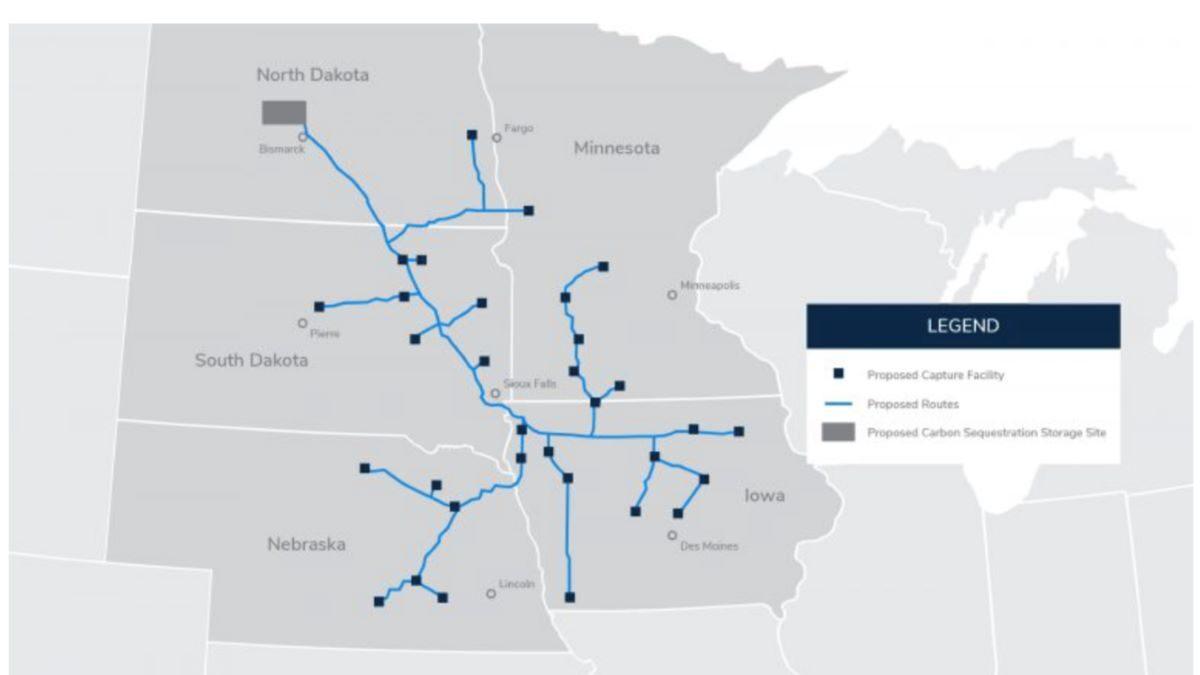Experts Support Granting States the Power to Approve Carbon Capture Wells
Analysts advised a Senate panel that while federal regulators ought to take a step back, Congress must ensure that allocated funds are not hindered by DOGE.
Experts informed the Senate Environment and Public Works Committee on February 12 that federal agencies ought to relinquish primary permitting authority to states for determining which wells are appropriate for carbon sequestration and for overseeing large-scale carbon capture initiatives.
He highlighted Monolith’s $1 billion “conditional commitment” for a Nebraska carbon utilization project, which could jeopardize without the federal government fulfilling its promises.
“In brief, if there is a freeze or delay in these funds, the probability of these projects becoming fully operational is extremely doubtful,” Cavanaugh remarked.
Carbon capture, utilization, and storage (CCUS) involves capturing carbon dioxide from significant sources, such as power plants or industrial facilities, and either repurposing it as a secondary energy source or “sequestering” it deep underground to keep it from entering the atmosphere, where it primarily drives global warming.
This evolving method has yet to demonstrate commercial viability, and critics contend it is a tactic used by the fossil fuel industry to circumvent emission regulations and maintain market share amid the rise of renewable energy technologies.
Senate Environment and Public Works Committee Chair Senator Shelley Moore Capito (R-W.V.) stated that a key focus is to preserve authorized allocations and advance the implementation of the USE IT Act, highlighting “significant issues with its execution that have hindered the rollout and development of CCUS.”

The Midwest Carbon Express is a 2,000-mile web of carbon-capture pipelines proposed by Summit Carbon Solutions. Courtesy Summit Carbon Solutions
Accept the Funding, Avoid the Regulations
The legislation mandates the Council on Environmental Quality (CEQ) to create guidelines for CCUS projects and CO2 pipeline developers, assemble task forces to gather insights from various expertise groups, and expand the 45Q tax credit to ensure utilities have stability.
Capito noted the EPA under the Biden administration has not met these goals, recognizing that there is no “clear pathway to expedite permitting for these projects,” that the first CCUS task forces were only authorized in April 2024, and that the agency has approved only two Class VI well projects over the past four years.
Connor outlined three key reasons why the 45Q tax credit and USE IT Act have failed to accelerate CCUS development: the cost of retrofitting large-scale electricity generation plants, expenses related to CO2 pipeline permitting—which often encounters public opposition—and long timelines and delays in the federal permitting process for Class VI storage.
“I trust you all can see that this system is inefficient and needs improvement. States are the best-equipped to regulate these activities,” Connor stated. “They can consider a broader range of factors, in addition to the environmental protections provided by the Class VI regulations, such as fostering the growth of geologic CO2 storage.”
Senator Pete Ricketts (R-Neb.), previously a two-term governor of Nebraska before his Senate election in 2022, mentioned a Nebraska biofuels company that has been awaiting an EPA permit for 33 months, despite being promised delivery in under 24 months.
“Perhaps this is why other companies hesitate to enter the market. With only eight Class VI wells permitted and 161 awaiting approval, why would I want to dive into this?” he questioned. “The EPA must expedite this process. It is simply unacceptable.”
In matters of CCUS—and various emerging energy technologies—time is more than just a financial factor; it is crucial for success, said Connor.
“To tackle this challenge, we need clear permitting frameworks, funding, and public-private partnerships to implement these essential carbon management technologies,” he emphasized. “If we don’t adopt this technology, China will, and they will reap the economic benefits, create hundreds of thousands of jobs, and enjoy a cleaner environment.
“The future, as always,” he concluded, “is a choice made through policy.”




